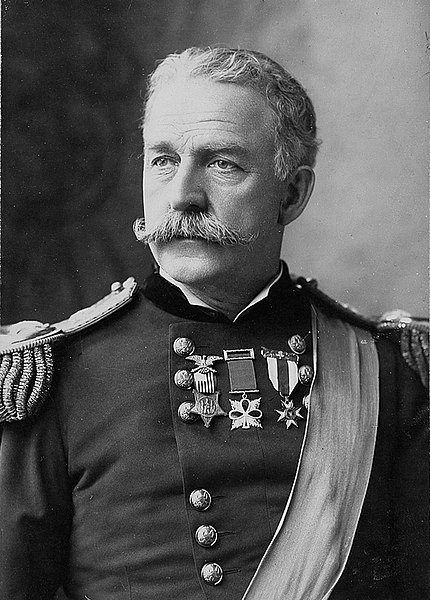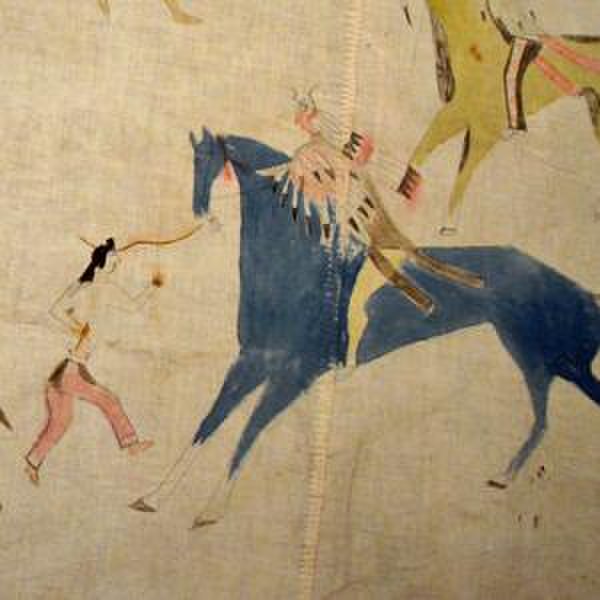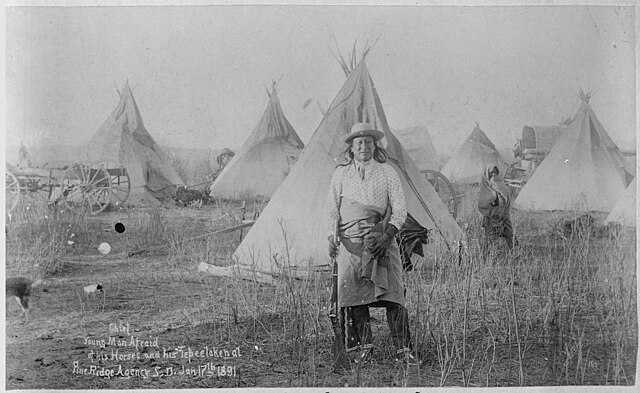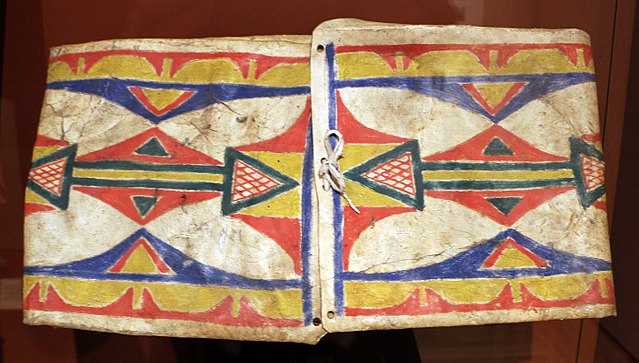The Wounded Knee Massacre, also known as the Battle of Wounded Knee, was the deadliest mass shooting in American history, involving nearly three hundred Lakota people shot and killed by soldiers of the United States Army. The massacre, part of what the U.S. military called the Pine Ridge Campaign, occurred on December 29, 1890, near Wounded Knee Creek on the Lakota Pine Ridge Indian Reservation in South Dakota, following a botched attempt to disarm the Lakota camp. The previous day, a detachment of the U.S. 7th Cavalry Regiment commanded by Major Samuel M. Whitside approached Spotted Elk's band of Miniconjou Lakota and 38 Hunkpapa Lakota near Porcupine Butte and escorted them five miles westward to Wounded Knee Creek, where they made camp. The remainder of the 7th Cavalry Regiment, led by Colonel James W. Forsyth, arrived and surrounded the encampment. The regiment was supported by a battery of four Hotchkiss mountain guns. The Army was catering to the anxiety of settlers who called the conflict the Messiah War and were worried the Ghost Dance signified a potentially dangerous Sioux resurgence. Historian Jeffrey Ostler wrote in 2004, "Wounded Knee was not made up of a series of discrete unconnected events. Instead, from the disarming to the burial of the dead, it consisted of a series of acts held together by an underlying logic of racist domination."

Mass grave for the Lakota dead after the massacre
A depiction of the Ghost Dance
Nelson A. Miles
Miniconjou, Lakota Sioux Chief Spotted Elk lies dead after the massacre of Wounded Knee, 1890
The Lakota are a Native American people. Also known as the Teton Sioux, they are one of the three prominent subcultures of the Sioux people, with the Eastern Dakota (Santee) and Western Dakota (Wičhíyena). Their current lands are in North and South Dakota. They speak Lakȟótiyapi—the Lakota language, the westernmost of three closely related languages that belong to the Siouan language family.
Sitting Bull, a Hunkpapa Lakota chief and holy man, c. 1831 – December 15, 1890
Scenes of battle and horse raiding decorate a muslin Lakota tipi from the late 19th or early 20th century
January 17, 1891: Young Man Afraid of His Horses at camp of Oglala band of Lakota at Pine Ridge, South Dakota, 3 weeks after the Wounded Knee Massacre, when 153 Lakota Sioux and 25 U.S. soldiers died
Lakota parfleche, c. 1890, Speed Art Museum








